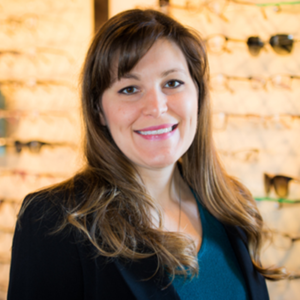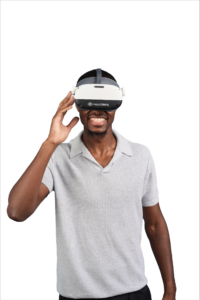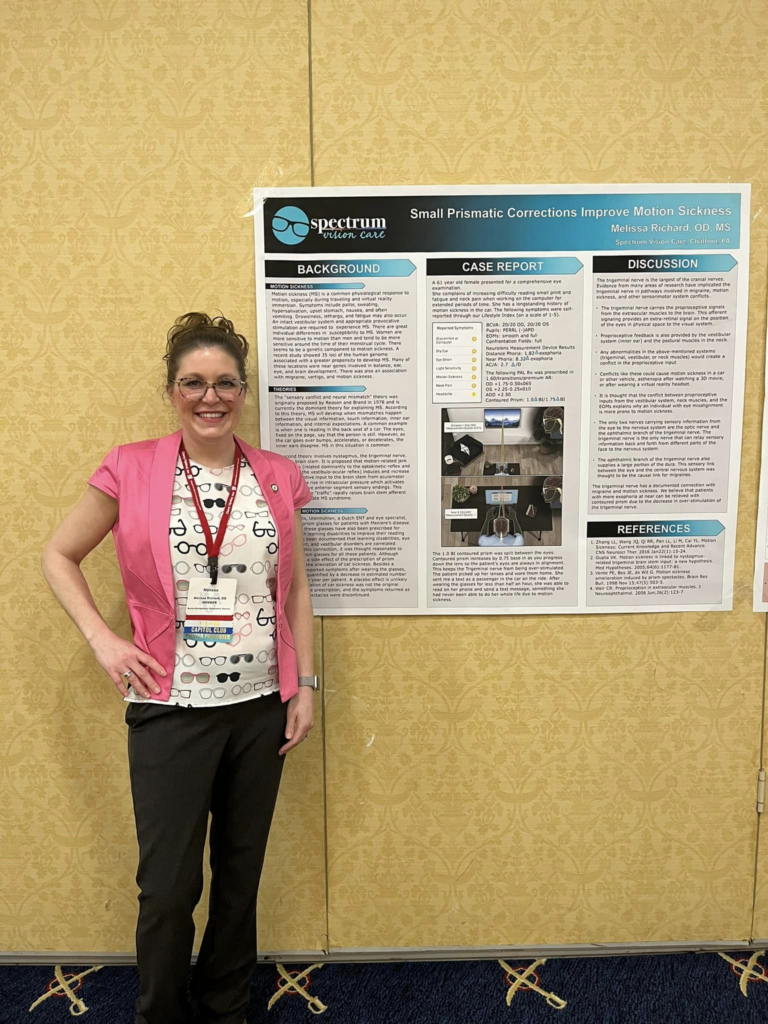

“Neurolens provides a whole system to identify patients who are in need, and then the Neurolens Measurement Device does all the work with about 10 tests in one and provides us with a solution. It’s now this seamless procedure,” she says. She can provide patients with a diagnosis and a solution—without having to do complex calculations on her own.
Dr. Richard has the NMD2 tabletop measurement device, but she is awaiting shipment of her two N3 headsets. The N3 provides the same testing in a 360-degree virtual experience, guided by a virtual technician who walks the patient through each test, explaining how misalignment can trigger symptoms.
SCREENING FOR SYMPTOMS
The staff sends a link to the Neurolens Lifestyle Questionnaire to all comprehensive exam patients ahead of time. “Before patients come in, we can already see who is symptomatic,” she says. It’s not uncommon to have about 80% of her patients scheduled for that day reporting symptoms with computer-based tasks.
“We do try to measure everyone on the NMD2 that we can, even if they’re only mildly symptomatic,” Dr. Richard says. “Patients often ask me why we asked about these symptoms because they don’t think it can be related to their eyes. So I tell them we’re
going to take the tests at the Neurolens device and fi nd out,” she says. The test takes less than three minutes, so it can be part of the pretest process.
Once they’ve taken the test, they’re curious to hear what the results are. Neurolens makes it easy to explain because there are diagrams that show how their eyes might be misaligned, for example.
She’s particularly excited about the patient education that is built into the N3. The plan is to have a device in each of her two exam lanes, and technicians will start the Neurolens test as their final action item. The technician avatar explains the results to the patient. “It’s a cool experience for patients. They’re getting educated on these lenses even before I walk into the room,” Dr. Richard says.


She expects that adopting the N3 will have added advantages. “The technician does not have to babysit the device. So the tech can finish up the charting, for example. And I can walk in just as the testing sequence is finishing. It will help reduce patients’ perceived waiting time,” Dr. Richard says.
Because they are headsets, it will also allow staff flexibility to run the test on a patient waiting in the dilation area, for example.
HOT SALES
Dr. Richard says that the Neurolens money-back guarantee also makes it easier for patients to say yes. “We’ve had fantastic months where 50% of our patients opt for Neurolenses. They come back and tell me that they’re life-changing. Word-of-mouth is really taking off, too,” she says.
Even something as simple as sending the questionnaire to patients ahead of time or posting a QR code to the survey at the front desk is bringing in new patients. “Patients taking the test will tell friends and family members who complain about some of the symptoms that our office is asking about specifically. Even if our patient doesn’t need Neurolenses, they may know someone who does,” she says.
Dr. Richard says that her use of Neurolenses continues to evolve. “Initially, I was prescribing them mainly for patients with persistent headaches, but now many of my patients with motion sickness are benefitting from these lenses,” she says. Her mother helped open that door.


Dr. Richard put her mother in Neurolenses for her computer-related neck pain and headaches. “She had always suffered terribly from motion sickness. If we were in the car and I was driving, she could not help with directions because she couldn’t look at a map or her phone for even a moment. On the day she got her Neurolenses, she texted me from the driveway to say she loved the lenses,” Dr. Richard recalls. She quickly realized that this was an entirely new benefit of the lenses for her.
She has also prescribed them for post-concussion and brain injury patients who were so symptomatic that they could not participate in their therapy. Putting them in Neurolenses allows them to advance their progress more quickly.
Whether patients get the kind of relief that she does personally—“I feel less tired at the end of the day”—or the alleviation of symptoms that allows them to participate more fully in their lives, she’s grateful she can provide them with an explanation and a solution.
Read how doctors are building a niche with specialty services here.



